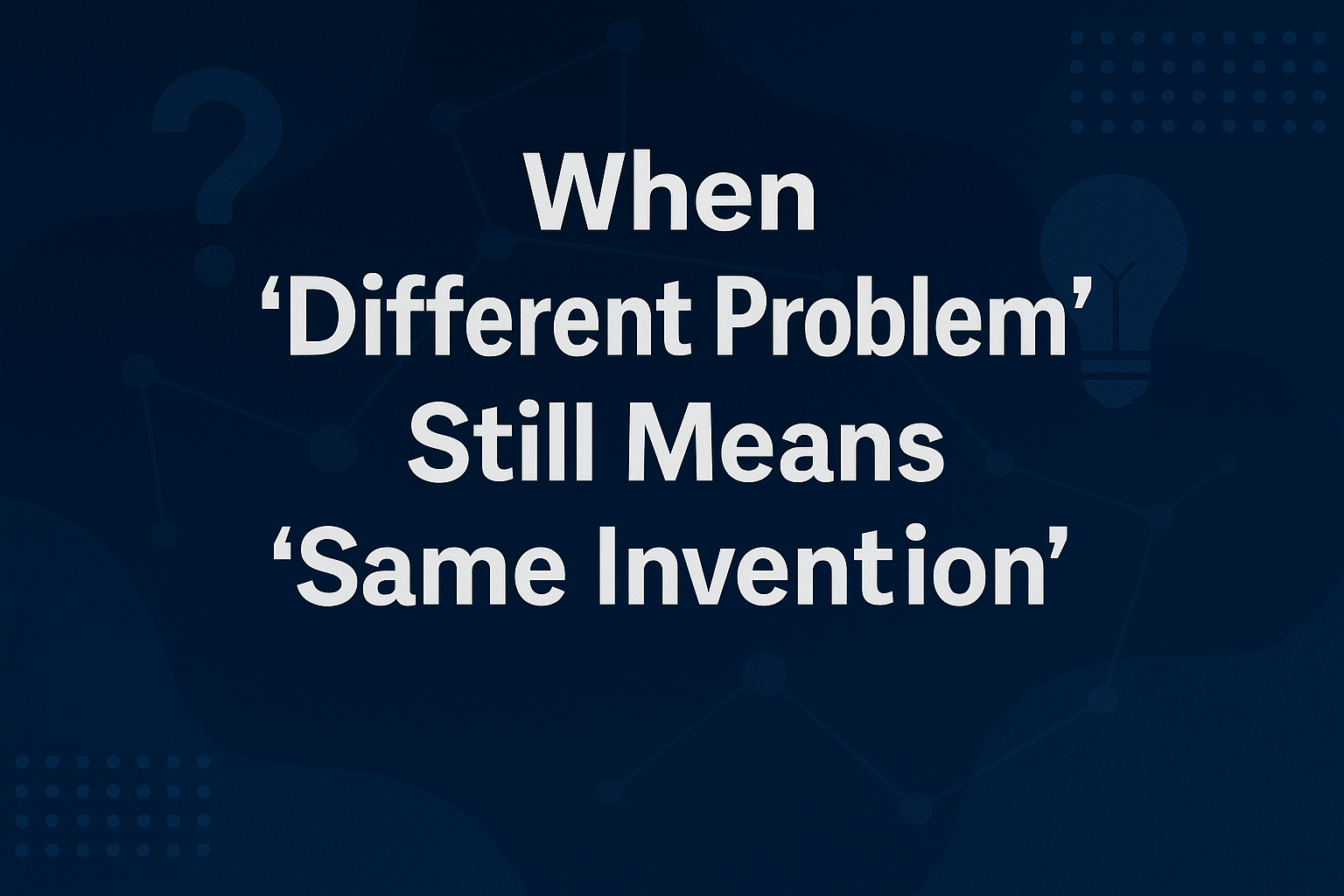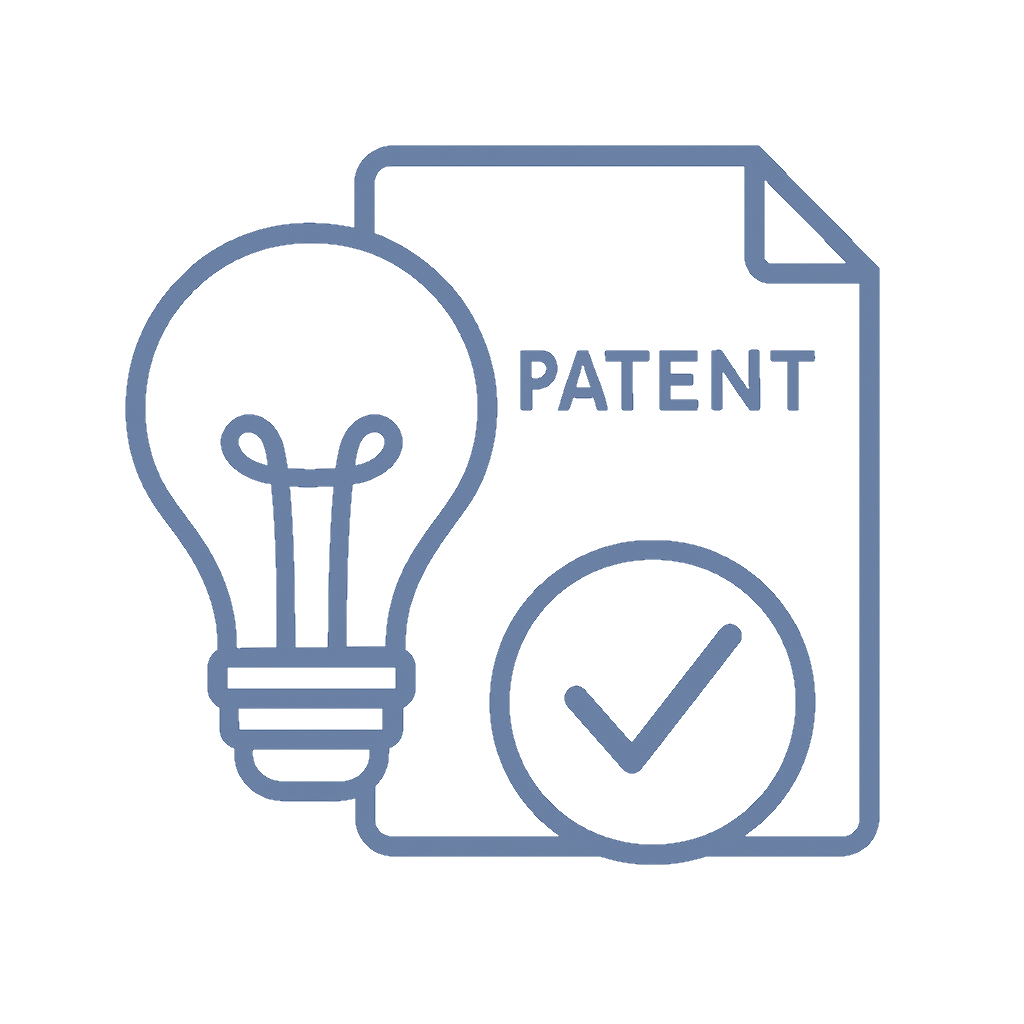📌 Quick Summary
1-Sentence Answer
Even if prior art solves a different problem, if it teaches your invention, it can still be used to reject your patent.
The Article Overview
This article dives into a common misunderstanding in patent prosecution: assuming that different problems solved mean different inventions. We explore how the USPTO evaluates prior art, why "teaching the invention" is what really matters, and how to navigate rejections with smarter arguments.
❓ Common Questions & Answers
Q: Can I argue that prior art solves a different problem than my invention?
A: Yes, but it won’t work if the prior art still teaches your claimed solution.
Q: What does “teaching the same invention” mean in patent law?
A: It means the prior art discloses the features or steps that your claim recites, regardless of the problem it addresses.
Q: Why isn’t the problem solved considered limiting?
A: Because claims are evaluated based on structure and function, not motivation or context.
Q: How do I overcome a 103 obviousness rejection like this?
A: Focus on specific claim elements missing in the cited art, not just differences in motivation.
Q: Does the examiner have to agree with my invention’s purpose?
A: No—they only care whether the art teaches or renders your claims obvious.

📜 Step-by-Step Guide
Step 1: Read the Office Action Thoroughly
Identify which references are being used and what claim elements they allegedly disclose.
Step 2: Highlight What the Art Actually Teaches
Focus on the actual technical disclosures, not just the stated problem or objective.
Step 3: Compare Structures or Steps, Not Just Outcomes
Claims are rejected based on similarities in structure or method, not why they were created.
Step 4: Craft a Response Based on Missing Elements
Your argument must show that the reference lacks at least one claim element.
Step 5: Avoid “Different Problem” as a Primary Argument
Use it to support a structural distinction—not as your main rebuttal.
📖 Historical Context
The U.S. patent system, built on the foundation of promoting innovation, evaluates novelty and non-obviousness based on what is disclosed—not why it was disclosed. In the early 20th century, patent cases hinged on function and mechanics, but as technology grew more abstract, arguments around “problem solving” began to appear more often.
In response, courts clarified that claims must be evaluated based on their structure or steps. The famous KSR v. Teleflex case in 2007 reaffirmed this by expanding how examiners can combine references—even when motivations differ. This broadened the grounds for obviousness and diminished the weight of problem-solving motivations in arguments.
Today, USPTO examiners regularly reject arguments that say, “the art doesn’t solve my problem.” Instead, they look for whether the art teaches or suggests the claimed solution—even if it’s framed around a completely different use case.
🏢 Business Competition Examples
1. Apple vs. Samsung
Samsung cited art solving a different UI issue to reject an Apple touchscreen gesture patent—but the court sided with Samsung because the prior art taught the same touch interactions.
2. Amazon’s One-Click Patent
Challengers argued that earlier checkout systems solved different problems, but they still showed similar elements, leading to multiple reexaminations.
3. IBM Software Rejections
IBM’s enterprise system patents often face rejections using consumer-level art. The problems differ, but when the underlying method is the same, the rejections stick.
4. Tesla’s Battery Optimization Filing
A prior art reference related to mobile phone batteries was used to reject Tesla's automotive claims. Tesla lost that round—the tech was deemed close enough.

💬 Discussion Section
One of the biggest pitfalls in patent prosecution is misunderstanding what counts as prior art. Applicants often fixate on what problem the art is solving, but the USPTO isn’t grading your motivation essay. Instead, they’re checking if someone else already taught your magic trick—even if they used it for a different party.
This concept challenges many inventors, who are justifiably proud of how their solution addresses a pain point. But patent law is cold and clinical. If an old reference describes the same combination of components or steps—congratulations, it’s still prior art. That reference might have solved a lawncare problem, while your invention is aimed at surgical devices. Doesn’t matter. If the method or structure overlaps, it’s game over.
This is especially dangerous in software and method patents, where functionalities often generalize across domains. A cloud security solution can get rejected based on a retail checkout system. Why? Because it’s not about context—it’s about disclosure.
Instead of trying to argue context or intent, practitioners should zero in on structural or procedural differences. Find what’s missing, what’s different in the mechanics, what feature the examiner overlooked. That’s the kind of argument that works.
⚖️ The Debate
🟢 Applicant’s View
“My invention is novel because it addresses a problem the art never considered. It’s solving something new, which should count as innovative.”
🔴 Examiner’s View
“If the art already teaches your solution—even for a different purpose—it still undermines novelty or non-obviousness. Problems don’t limit claims.”
✅ Key Takeaways
-
Prior art doesn’t need to solve the same problem—just teach the same invention.
-
Structural or functional similarity matters more than motivation.
-
“Different problem” is a weak standalone argument.
-
Examiner’s job is to identify technical overlap, not purpose.
-
Winning responses focus on claim elements, not context.
⚠️ Potential Business Hazards
-
Wasting time on ineffective office action responses.
-
Delays in prosecution due to poor argument strategy.
-
Loss of IP rights if rejection arguments fail.
-
Misguided reliance on marketing-based logic in legal proceedings.
❌ Myths & Misconceptions
-
"If it solves a different problem, it’s not prior art." ❌
-
"Patent claims include the problem being solved." ❌
-
"I can just distinguish the motivation." ❌
-
"The examiner has to understand my invention’s purpose." ❌
-
"Prior art from other industries doesn’t apply." ❌
📚 Book & Podcast Recommendations
-
"Patent It Yourself" by David Pressman
https://www.nolo.com/products/patent-it-yourself-pat.html -
"Landmark Patents: A Lawyer’s Guide to USPTO Rejections" (Podcast)
https://landmarkpatents.fm -
"The KSR Case Explained" – IPWatchdog Podcast
https://www.ipwatchdog.com/ksr-podcast -
"The Essential Guide to USPTO Responses"
https://patenthacks.com/essential-responses
⚖️ Legal Cases
-
KSR International Co. v. Teleflex Inc.
https://supreme.justia.com/cases/federal/us/550/398/
Landmark decision expanding the scope of obviousness rejections. -
Apple Inc. v. Samsung Electronics Co.
https://casetext.com/case/apple-inc-v-samsung-elecs-co-ltd
Highlights how prior art solving different problems can still invalidate claims. -
In re Gleave (Fed. Cir. 2009)
https://caselaw.findlaw.com/us-federal-circuit/1501981.html
Clarifies that function or result is not limiting in patent claims. -
Ex Parte Smith (BPAI 2007)
https://e-foia.uspto.gov/Foia/RetrievePdf?system=BPAI&flNm=fd20070749-11-20-2007-1
Discusses differences in use-case vs. structure when assessing rejections.
📣 Expert Invitation
Got a tough office action to respond to? Visit http://inventiveunicorn.com to schedule a consultation or ask your toughest USPTO question. We love a good patent puzzle.
🔚 Wrap-Up Conclusion
Patent prosecution is tricky enough without falling into common traps. When the USPTO says a different problem doesn’t save your invention, believe them. It’s about teaching, not purpose. So structure your arguments on what matters—and let marketing handle the rest.












